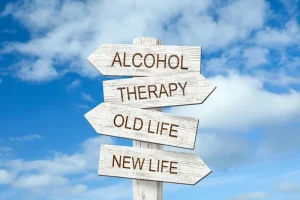To understand this complex and unique disorder, it’s essential to learn the different types of substance use group activities alcoholics. It’s also critical to understand their experiences with substance abuse. Treatment for alcohol use disorder varies depending on the severity of your symptoms and how long the condition has persisted.
If you or someone you know suffers from alcohol use disorder, seek treatment as soon as possible. These treatment options can help you or your loved one take the first step toward sobriety and live a healthier, happier life. If you are looking for the right treatment option for yourself or someone you know, it is important to speak with a doctor or mental health professional about the best action plan. Outpatient treatment is less intensive than inpatient treatment but still effective for some people with AUD.
Men outnumber women 2.5 times to 1 in this category, and they tend to be single. Experts in the field of addiction say these categories are more than just labels — they can also be useful tools in treating alcoholism. Not all alcoholics know they suffer from a substance abuse problem because denial is a regular and expected aspect of alcoholism.
Traits of Alcohol Use Disorder
This type of treatment allows you to receive help in an outpatient setting while still attending to your everyday responsibilities. This is a great option for people with mild to moderate addiction and those who have already gone through inpatient treatment. It typically includes medically monitored withdrawal, which helps reduce symptoms of withdrawal. It can also help prevent seizures or other complications that may arise.
If you are struggling with alcohol misuse despite negative personal, professional, and health consequences, you may fit into one of the five types of alcoholism or alcoholics. Nearly 19 percent of alcoholics in the U.S. fall into the intermediate familial category. Most are middle-aged, began drinking at about 17 and were addicted to alcohol by their early 30s. Nearly 32 percent of alcoholics fall into the young adult category, making it the most prevalent subtype in the U.S. The typical young adult alcoholic is about 25 and started drinking at age 19 or 20.
Young Antisocial Alcoholics
Too much alcohol affects your speech, muscle coordination and vital centers of your brain. A heavy drinking binge may even cause a life-threatening coma or death. This is of particular concern when you’re taking certain medications that also depress the brain’s function. MAT uses medications approved by the FDA to treat AUD alongside counseling and behavioral therapies. These medications can help reduce cravings, block the effects of alcohol, and treat withdrawal symptoms like anxiety and insomnia. Treatment typically includes individual and group counseling, medication, and other therapies.
Confidant Health: Customized Virtual Treatment for AUD
These people have an underlying antisocial personality disorder, exhibiting various harmful behaviors. Criminal activity, disregard for safety, impulsiveness, deceitfulness, and a lack solutions based treatment of remorse are the defining traits of this group. Rehabilitation programs are an excellent treatment option for people with severe symptoms of the condition. They remove you from your triggers and focus on helping you heal for the period you are in them. You are likely to engage in several forms of therapy, from individual to group therapy.
- Consuming large amounts of alcohol over a long period is most likely to result in alcohol use disorder.
- Whiskey is made from fermented and distilled grain, usually from rye, corn, barley, or wheat.
- Kombucha comes from sugared tea that has been fermented and introduced to yeast.
- Person-centered treatment helps provide treatment modalities that are most suited to the individual.
- The basal ganglia have become reliant on alcohol for activation; without it, a person may feel anxious and irritable.
By exploring each category in depth, you’ll better understand the complexities surrounding alcoholism. You’ll also know why it requires special treatment for successful recovery. A person with AUD can lose control over the amount of alcohol they consume and continue to drink despite any adverse health, social or occupational consequences. A health care provider might ask the following questions to assess a person’s symptoms. Alcohol use disorder is considered a brain disorder, affecting the functioning and structure of the brain, and symptoms can range from mild to moderate to severe.
One serving of pale lager (like a Pilsner) typically has 4–6% ABV and around 150 calories. One serving of fortified wine can have almost double the amount of calories as a red wine. Tequila is made from the blue agave plant, which is indigenous to Mexico.
Genetic, environmental, and psychological factors influence the risk of becoming an alcoholic. Some may be more inclined to develop alcoholism due to their genetics and family history, while others may develop alcoholism due to environmental and psychological factors. Erin is a Nurse Practitioner with 8 years of experience in midwifery and women’s health. She has spent the past 5 years specializing in the treatment of opioid and alcohol use disorders.
Beyond problematic drinking behaviors, there are a few traits that are more common among people with AUD. Long-term alcohol misuse—most common among the functional, intermediate familial, and chronic severe subtypes—can impair liver function. Unfortunately, some of the standard medications used to treat AUD can increase the burden on the liver as its job is to process food, beverages, and drugs that enter your system. The first subtype of alcoholism is the young adult subtype, also called the young alcoholic.
This group also experiences the highest alcohol-related emergency room visits, work and social problems, and withdrawal. The intermediate familial subtype makes up 19% of Americans with alcohol use disorder. They tend to be middle-aged with a higher chance of clinical depression and a family history of AUD. Classifying alcoholism into subtypes can also help identify and remove barriers to professional assessment and treatment. For example, those in the chronic and severe subgroup tend to have the lowest socioeconomic status. This means that while they may benefit most from inpatient treatment, they may not be able to financially afford the cost.
Get Professional Help
It also can determine whether a certain type of treatment will be more effective than another. Alcoholism is a serious problem that affects millions of people around the world. There are many types of alcoholism, including functional alcoholics, young adult alcoholics, and chronic severe alcoholics. Although xanax vs ambien you may suspect that you or someone you love may need help with alcohol use disorder, you might not think you need a treatment program to reduce drinking.
The five types of alcoholics deal with one or more alcohol problems. The best way to find a successful treatment program is to understand alcohol issues in-depth. The good news is they’re more likely to seek treatment than those in other groups at 66%. They are also the most likely to participate in detox programs at inpatient treatment centers with private health care providers. Functional alcoholics have an average household income of almost $60,000 and the lowest rates of legal issues.











